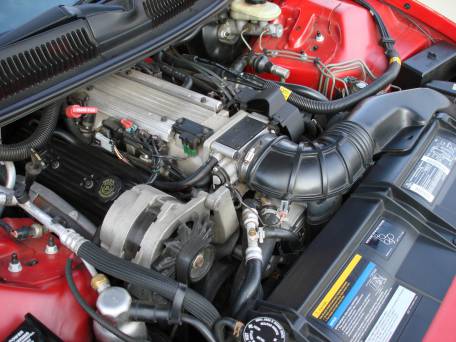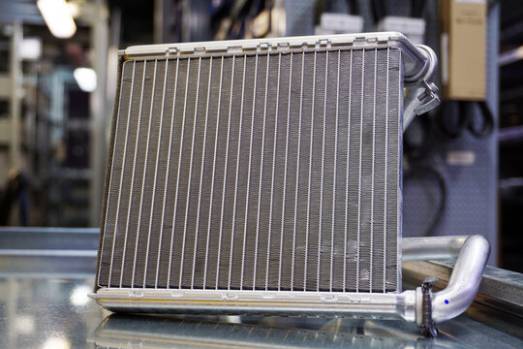Does warm air blow when the AC light blinks 3 times in your car?
If you answered yes, do not worry. This is because the air conditioner system’s pressure is too low from what is most likely a leak. The pressure sensors have detected this low pressure, so they are keeping the compressor from turning on.
Table of Contents
Why is my AC Light Blinks 3 Times? [Major Reason]
If the AC light on your air conditioning unit blinks three times, it could indicate a problem with the compressor. It is recommended to have a certified technician diagnose and repair the issue to ensure the proper functioning of the AC unit. Ignoring the issue may lead to further damage or a complete system failure.
Here’s what you need to do.
- This quick tip might seem obvious, but the first thing you could do is check the owner’s manual for your car because it will tell you how to understand climate control better. For example, many different vehicles lock their AC compressor when the temperatures are either freezing or humid – this helps the compressor function correctly.
- Check your car’s refrigerant level. Refrigerant is the gas or liquid that your AC system uses to cool the air sent to the cabin.
- Have a look at the ground wire above the compressor because it might be loose.
- If none of these tips work, please consult a mechanic!
Top 3 Reasons Why AC Light Blinks 3 Times
1. Low Refrigerant
When warm air comes out of your AC vents, it’s usually a sign that there may not be enough refrigerant in your car’s system to make sure that it is working correctly. While all AC systems leak refrigerant over time, they must be recharged eventually. However, if your air conditioner system develops a significant leak, your system could stop working altogether.

Solution: Recharge your car AC with a Refrigerant.
Recharging your air conditioner is one of the quickest, easiest, and cheapest tasks when it comes to taking care of your AC system. However, it could cause problems with the AC system in the long run if it’s done incorrectly. So make sure you read each step carefully before you continue.
Please note that while you can recharge your car on your own, you must take care to pressure-test your system to find any leaks. This means that you can patch them before refilling and recharging the system.
This is what you’ll need to recharge your AC system:
- A set of manifold gauges
- A vacuum pump
- R-134 refrigerant
- A nozzle to tap the refrigerant
- Gloves
- Safety glasses
Here is the step-by-step guide.
- Connect the manifold gauge to the AC system, ensuring that all the valves on the gauge are closed.
- Connect the low-pressure connector to the low-pressure port, then do the same for the high-pressure connector by connecting it to the high-pressure port.
- Now that the low and high-pressure connections are secured, turn the lines on.
- Next, connect the remaining third line to the vacuum pump, making sure that you tighten it by hand.
- Open both the valves on the manifold gauge. You will hear the pump work, and the reading on the manifold gauge will turn down to zero. The reading should show you 30 inches of mercury for vacuum; this is the exact pressure you want to see.
- Now, close both valves under the meter and seal the vacuum as well. Let your car sit like this for an hour. If no changes have taken place, then this means that there have been no leaks and that your car’s internal system is completely sealed.
- Once you’ve established that there are definitely no leaks, you need to continue creating a vacuum for an additional 45 minutes. What this does is suck all the moisture and air out of the system.
- Close the pump after 45 minutes.
- Connect your refrigerant nozzle to the refrigerant and then screw the adapter. The adapter will pierce the can. The manifold gauges and the adapter are still in the closed position at this point so that no refrigerant will enter your system.
- Open your can of refrigerant.
- Start your car and make sure the AC is on.
- Open the valve on the low-pressure side of the manifold gauge, and now, refrigerant is flowing through the system.
- When the can is empty, close the low-pressure valve.
- Remove the manifold gauge, and you’ve finished charging your AC!
You can click here for visual instructions on how to follow the steps mentioned above.
2. A Failed Compressor Clutch
When the AC system in your car turns on, the AC compressor clutch comes alive. Power is transferred from the engine to the pulley attached to your AC compressor, and this power enables your AC to start running, and in turn, makes your car cooler inside. This is why the AC compressor clutch is one of the most essential parts of the entire air conditioning system.
Your AC button could start blinking 3 times when the clutch is defective. You might also hear a squealing sound, or additionally, air pressure might be lacking.
Solution: Replace the Clutch Compressor
Here is the step-by-step process:
- Step 1: Locate your AC compressor
- Step 2: Remove the plastic rivets from the fan shroud
- Step 3: Now, identify four 10mm nuts that are fastened to the fan blade. Ensure that you are gentle in your movements so that you do not disturb the fan clutch.
- Step 4: Since the fan blade has been removed, there is enough space for you to reach the front of the compressor.
- Step 5: Using a set of vice grips, take a hold of the clutch’s inner metal ring.
- Step 6: Wedge the vice grips into the rubber.
- Step 6: remove the 8mm bolt.
For images accompanying the steps mentioned above, click here. The pictures will give you a clearer understanding of how to go about replacing the clutch compressor.
3. Blockage in the Condenser in the AC System

The AC system in your car is designed to pull heat from the car itself and then blows cool air back through the vents with the help of a refrigerant gas like freon. The refrigerant gas turns into a liquid and then back into a gas again; this is how your car feels cool and comfortable.
Unfortunately, there are times when the refrigerant cannot flow properly. This is often because of a system blockage, and it can result in the flow of hot air. These blocks could form in the condenser or evaporator, which in turn could be causing your AC light to blink 3 times.
Solution: Remove the Condenser
The condenser is found at the front of the car. Therefore, it is easy to visually inspect and see whether anything is blocking it. Here is the step-by-step process.
- To gain access to the condenser unit, you first need to set aside any parts that are in its way, like the radiator.
- Once you’ve located the unit, remove the AC lines from the condenser unit.
- Remove the condenser itself.
Please note that if none of these solutions work, you must consult a mechanic as soon as you possibly can!
What does it mean when my AC light blinks?
If your AC light is blinking, it often indicates an issue with the air conditioning system, such as low refrigerant levels, a clogged orifice tube, a malfunctioning compressor, or electrical problems. The blinking light serves as a warning to prevent further damage to the AC system component.
How do I fix my AC from blinking?
First, consult your car’s owner’s manual to understand how climate control works. Some vehicles lock the AC compressor in extreme temperatures for proper function. Check the refrigerant level, which is crucial for cooling cabin air. You can also examine the ground wire above the compressor for looseness. If these tips don’t help, it’s best to seek a mechanic’s assistance.
How do you reset an AC compressor?
To reset an AC compressor, you can try disconnecting the vehicle’s battery for 10-15 minutes, then reconnecting it. This process may reset the AC system and clear any error codes. However, if the issue persists, it’s essential to consult a mechanic to diagnose and address the underlying problem.
Why does my AC say wait 3 minutes before restarting?
An AC system displaying “wait 3 minutes before restarting” is likely utilizing a safety feature to protect the compressor. This waiting period allows the pressure within the system to equalize, preventing potential damage to the compressor when it starts up again.
Conclusion
On a hot day, you want to go for a drive to escape the muggy indoor heat, but find that your AC light blinks 3 times when you switch it on. A light that blinks when it shouldn’t can be very alarming, but you don’t need to worry. We’ve provided three solutions to this problem in this article, and by spending only a few dollars, you can solve the AC blinking 3 times problem on your own.
This article covered why the AC light blinks 3 times, how to solve this problem, and what materials are needed to solve this problem.
